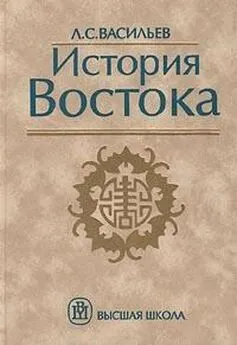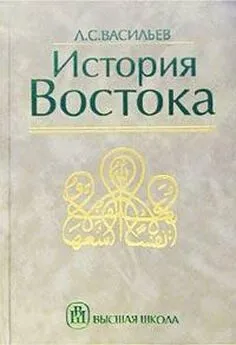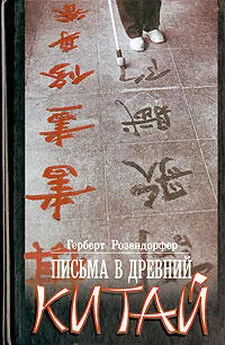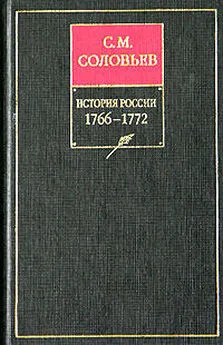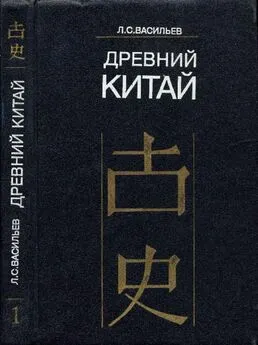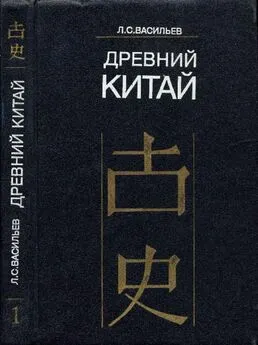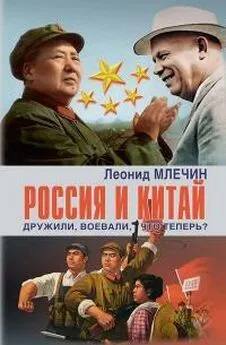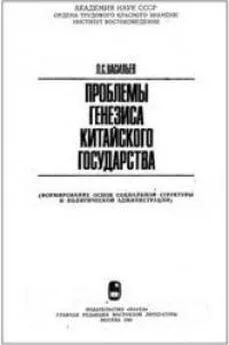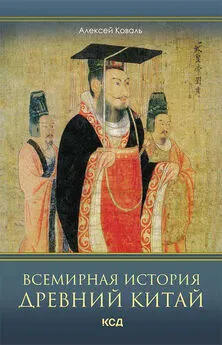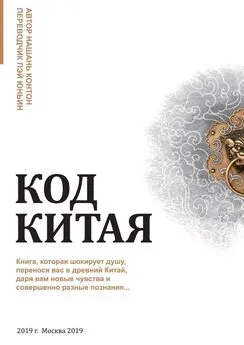Леонид Васильев - Древний Китай. Том 2: Период Чуньцю (VIII-V вв. до н.э.)
- Название:Древний Китай. Том 2: Период Чуньцю (VIII-V вв. до н.э.)
- Автор:
- Жанр:
- Издательство:Восточная литература
- Год:2000
- Город:Москва
- ISBN:5-02-018103-Х
- Рейтинг:
- Избранное:Добавить в избранное
-
Отзывы:
-
Ваша оценка:
Леонид Васильев - Древний Китай. Том 2: Период Чуньцю (VIII-V вв. до н.э.) краткое содержание
Том 2 трехтомника «Древний Китай» посвящен событиям периода Чуньцю (8–5 вв. до н. э.). Основное внимание уделено характеристике структуры китайского общества, в частности проблемам древнекитайского феодализма и дефеодализации чжоуского Китая.
Древний Китай. Том 2: Период Чуньцю (VIII-V вв. до н.э.) - читать онлайн бесплатно полную версию (весь текст целиком)
Интервал:
Закладка:
The main part of the Eastern Chou is subdivided into two periods, Ch'un-Ch'iu and Chan-guo. The name of the Ch'un-Ch'iu period (722–479 ВС) was derived from the chronicle "Spring and Autumn Annals" (Ch'un-Ch'iu), which was compiled in the kingdom of Lu, a former appanage of Chou-kung, where all historical documents were carefully preserved. According to the tradition, the text of the chronicle was revised by the great Confucius, a native of Lu, at the end of his life and because of that the work was included into Confucian Classics. In the course of time the chronicle was complemented by precious detailed commentaries that explained its sketchy accounts of events, the most important commentaries among them are Tso-chuan and K'uo-уu. The whole second volume of our three-volume publication was built mainly on the data of these texts.
It is appropriate to say here a few words about the character of the texts. Many of them scrupulously reflect data about their time and can be accepted with complete trust. Historiographers, who compiled chronicles, treated their work very thoroughly, as a rule, and did not let themselves make any digression from the truth, if they described current events that were well-known to them. Nevertheless and despite all that, there are numerous later interpolations, i.e. fragments and even full narratives including the so-called chapters of the second layer (the 7th-6th centuries ВС) of Shu-king, which should be treated as moralizing legends of a later period. They usually contained a clearly expressed didactic idea and were included into the context later. Most obvious in this respect are the prophecies that came true, the number of which in the texts is innumerable. There are also non-authentic texts of systematic content which reflect a tendency of a later period to see the early Chou and moreover the Ch'un-Ch'iu period as something complete and perfect, with strictly regulated interrelations, which had never been such in reality. As it is shown in the second volume, during the period of Ch'un-Ch'iu the feudal structure that emerged after the granting of appanages was in the process of its formation. Forms of interrelation and ritual practices were gradually developing as well as the code of honour of aristocracy. But it is important to take into consideration that all this, before it had fully developed or achieved perfection, was exposed to an energetic process of erosion and de-feudalization.
The second volume contains the description of both processes: the slowly developing norms and the ceremonial procedure of feudal relations and a fast de-feudalization of these norms starting at the end of the Ch'un-Ch'iu period, to which Confucius made a major contribution. The first three chapters of the second volume are very specific. They describe step by step the events of the two-and-a-half-century long Ch'un-Ch'iu period. These events are presented with sufficient details. Firstly, because there is available material abundantly year by year reflected in the commentaries on the chronicle. Secondly, because the outline of these events is very interesting and instructive. Though the text is hard to read and keep in memory (it is overloaded with names and events), it makes clear and visible those elements that are usually characteristic for feudal structure. Fathers kill their sons in struggle for the throne and vise versa, brother goes against brother and all this is happening to the accompaniment of glorification of respect for the elders and ancestors, adhering to rituals and other ceremonials. Intrigues, plots, coups, flight of losers if they managed to escape and triumph of victors, permanent feudal wars of aristocrats, whose main activity was exactly war and hunting-that is the outline of the main events. This can be expanded by love stories, adulteries and harem passions, including incest, clashes of powerful aristocratic clans, faithfulness of some and betrayal of others. In other words, the picture is surprising and almost unique in the world history (if we take into account not novels but chronicles with detailed commentaries on them).
The following chapters of the second volume aim at analysing all this rich material from various sides, be it political history, norms of feudal structure, the character of feudal aristocratic wars, the problem of religious ideas and prejudices, forms of the Heaven cult, territorial gods or dead noble ancestors, faithfulness of some and betrayal of others. It also says about rituals among the nobility and the way of life of the common people, which could be learnt, in particular, from the folk songs and poems in the "Book of Songs" (Shih-king). Considerable attention is devoted to the social structure and the scale of rank in the texts, as well as to what extent these ranks corresponded to the realia of the time. Having no aim to characterise each chapter separately, it is important to pay attention to what they all have in common. It is the question of the development of the feudal structure, peculiarities of formation of the new vassal-seigniorial system, in the framework of which the domain of the Chou suzerain-wang, i.e. the Son of Heaven who possessed sacred holiness, was only one of existing political structures far from being a big one.
During the Western Chou the 14 armies used to be the basis of the Chou wangs' force and allowed them during the first two or three centuries of domination to feel at the very least powerful rulers, whose vassals de facto depended on them. These armies had disappeared a long time before. The wang's domain was now found in a miserable situation. It could hardly support one army. And although at the beginning of the Ch'un-Ch'iu period wangs still tried traditionally to interfere from time to time in the internal wars of their vassals, it soon became clear that it was beyond their powers. Moreover, with every new decade the real power of wangs diminished and wangs in case of necessity, such, for instance, as a conspiracy of relatives competing for the throne, had to turn to those of chu-hou princes, who had real power.
The question was that, as it has been mentioned earlier, in the framework of the structure formed in the Ch'un-Ch'iu period some vassal realms became bigger and stronger than the domain and many were equal to it. And none of the big and medium realms had the intention to obey to the wang although no one refused to treat with sacral respect the Son of Heaven. At the beginning this led to a chaotic confusion in Chung-guo, which was the name of an array of central and most civilized Chou kingdoms and princedoms (big semi-barbarian states-Ch'in in the west near the ancient places of inhabitance of the Chou-and Ch'u-in the south-were outside Chung-guo, as well as innumerable amount of small tribal states most of which were usurped by the stronger ones after a while.) Some time later first eastern Ch'i and then western Chin rose to prominence among the big kingdoms inside Chung-guo. It was from the rulers of these states that the so-called p'a, strong illegitimate rulers, appeared and took with weak wangs' approval the latters' authorities to arrange and maintain order in T'ien-hsia.
The first p'a was Huan-kung of Ch'i with his assistant Kuan Chung, a renowned reformer. They both successfully ruled in T'ien-hsia in 80-40-s of the 7th century ВС, called conventions of chu-hou and dictated their will, supporting it by considerable force. After that the functions of p'a were fulfilled by the rulers of Chin kingdom, the first of whom was a famous Wen-kung. Like wangs, p'a rulers acted as suzerains towards chu-hou rulers, who had to pay them certain contributions for maintaining order in T'ien-hsia. A wang did not receive any regular contributions from the vassals, who in the best case restricted themselves to sporadic presents or deferential gifts. Still the status of a p 'a was not equal to the status of a wang. And when some p'a wanted to equal himself to the Son of Heaven or replace him, he met the unwillingness of the wang and, moreover, of the chu-hou to change the habitual and universally convenient state of affairs, not to mention the fact that the mechanism of replacing the Mandate of Heaven was in reality non-existent.
As far as kingdoms and princedoms were concerned, each of them had its internal hierarchy, generally of a similar type. Places of distinguished high officials and ministers in it were usually occupied by ch 'ings, heads of hereditary patrimonial estates. They were, as a rule, not so numerous, usually about 3–6 unless it was a big Chin. They were of different origin. Some came from the ruling house, others were aristocrats not related to the rulers. But that had no noticeable effect on the stability of the political structure since in both cases ch'ings were powerful and their increased influence sometimes undermined the absolute power of the ruler. That is why the chu-hou after the allotment of the first sub-appanages-ancestral lands, usually refrained from further land division even when it concerned their favourite sons. Since sons were mentioned: each of chu-hou and ch 'ings (this refers to wangs as well) had the right to pass the throne to one of his sons, whom he himself selected. That often led to a lot of murderous intrigues. Women from the harem fought defiantly to have their sons selected. Let us remember that the last West-Chou ruler lost his throne and life exactly because he conceded to his favourite concubine and replaced his elder son from inheriting the throne. Such episodes repeated themselves in different kingdoms and princedoms more than once. The game was worth it: it was only one who could get all. The rest of the sons, who were quite a few in harems, could only expect a knight status {ta-fu\ i.e. a warrior-aristocrat on a chariot. In the best case some ta-fu received a town as conditional benefice-alimentation. But many remained even without this and worked for their master only for pay. Ta-fu numbered several thousands in a big kingdom and several hundreds in a medium one. At the end of the Ch'un-Ch'iu period huge numbers of aristocrats of the lowest rank, shih, appeared. These were descendants of ta-fu or common people promoted during their service, especially from successful warriors and servants.
The second half of the Ch'un-Ch'iu period passed, as it was mentioned earlier, under the badge of de-feudalization of the Chou feudalism that had not enough time for final development. What played the main role in it? There were plenty of reasons. Firstly, feudal wars which ended either in annexation of weak princedoms and semi-barbarian tribal proto-states or just in sorting out relationships (those killed in wars were considered as a sacrifice to the ancestors or the territorial deity-she). But the wars contributed to the mutual destruction of aristocracy although the tempo of its reproduction in harems was fairly fast. Secondly, what is more important, the piety with regard to the early Chou, when the first rulers from that house, especially Chou-kung, had a stiff grip over the supreme power, remained. It was the time when the first rulers of appanages felt not so much as powerful vassals but as commanders of Chou garrisons in different, often rather remote areas. Thirdly, the wang himself and his advisors, including influential historiographers considered tfye situation of disunity in T'ien-hsia as abnormal and searched for every possible way to correct this situation. And, finally, in the fourth place, what should be considered nearly the most important thing-in the second half of the Ch'un-Ch'iu period in T'ien-hsia serious changes of social-political and administrative character took place. It was the beginning of the Iron Age with new tools, development of commodity and monetary relations, flourishing of towns of new type that worked for the market and were full of artisans and merchants that were growing rich. In these circumstances feudal appanages were replaced by administrative and territorial districts headed by removable clerks-sAe, who were obviously displacing the former aristocracy. It should be mentioned that the formal acknowledgement of branches of aristocratic kin was limited to the first five generations.
Читать дальшеИнтервал:
Закладка:

